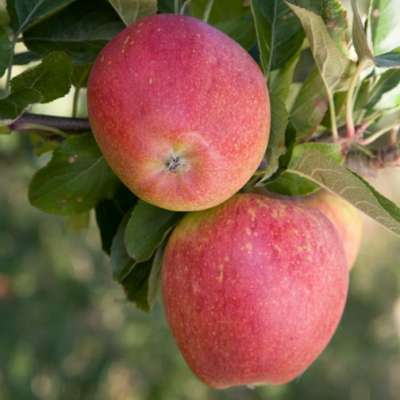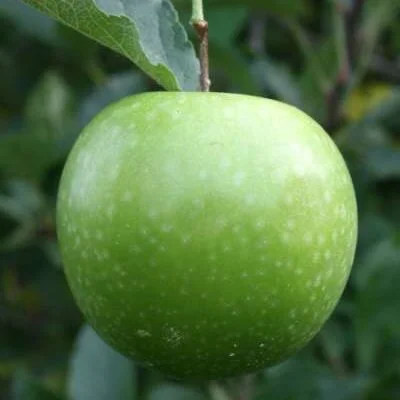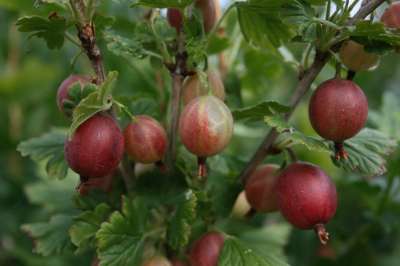Your basket is currently empty!
Guide to planting strawberries and their aftercare.
Deservedly the most popular and often grown of all the soft fruits, even in today’s shrinking gardens the strawberry will fit happily into modern plots. A strawberry plant is, after all not terribly big, and also quite accommodating. In this article – how to grow strawberries – I will endeavour to inform with lots of idea’s on how to cultivate and get the best out of your strawberry plants.
Buy our quality strawberry plants here
A FEW POINTERS
The plants themselves grow just 10-15” high in average. Although a full sun position is preferable, part shade is also accepted and provided at least some sun is received the fruits will ripen. A strawberry plant has a useful life of 3-5 years [less when grown in containers] ; after that it’s best to start again with new stock. And with careful selection you can have ripe fruits from May to the frosts with no special treatment.Because the fruits of a single strawberry plant will ripen over a staggered period, it is recommended that not less than 5 or 6 plants are planted per variety because otherwise you won’t really end up with enough to harvest at any one time.A well grown strawberry can yield up to 1 ib of fruit per year and you can normally expect a full crop thesummer following planting if planted by the Autumn before.
WHEN TO PLANT STRAWBERRY PLANTS
You can actually plant your strawberries at any time of the year so if you’re suddenly overtaken by an urgent desire to get them in, or if the time is right for you personally, then go for it! But there are certain times that are better than others, and the type of plant you are buying may also be influenced by season. There are 3 main ways in which you may buy strawberry plants:Pot Grown strawberry PlantsThese remain king for quality and convenience and will generally establish the fastest with little check in growth. Plants may be supplied in plastic pots or in peat pots. The size will vary with the grower; usually these are supplied during the growing season but you can put them in at any time depending on availability. These plants provide the heaviest crop after planting, especially if planted the summer/autumn before.
The bare-rooted runner
Is usually supplied during the dormant season – from October to April. It is a runner from the parent plant that has been rooted into the ground and then dug up when it is established and ready, and these runners are then tied into bundles and sold on. They are a convenient way of transplanting during the winter season and you don’t have to water them in much afterward. They may carry some fruits the Spring following planting.
The cold-stored Strawberry runner
Is exactly the same as the bare-root runner described above, but the plants have been lifted and then placed in cold storage [a kind of fancy extra-large refrigerator] They are usually supplied from April-June when the bare rooted runners are out of season. These plants can sometimes be problematic in re-establishment and need careful and prompt treatment on receipt, but they are popular and can yield well the first season. Cold stored runners are usually capable of giving a yield a few weeks after planting – the same summer following planting. But this can be dependant on the grade of runner you have been supplied with. Commercial nurseries grade their runners in accordance with size and weight. Quite simply if they are small plants they won’t be ina good position to crop well so soon after planting, or may not actually produce any flowers at all that first year. If the runners are bigger and weightier then they will. I’m not entirely convinced that it is a good thing to crop your strawberries so soon after planting and some believe that it saps the plants’ strength for the next season. But it is a very popular way of growing strawberries especially if you are an impatient gardener or have a need for fast results!The absolutely best time for planting strawberries is without doubt July-September. This is the ‘new’ season and has been the preferred choice of professionals for many years. This is the time when the fresh new runners have been produced from the parent plant during the growing season and they have been potted and grown on before sale. Planting from July to September allows for fast establishment before the winter and you will get virtually a full crop the next Summer and as the plants are so well established there will be no loss of strength for subsequent years’ cropping. So if possible be prepared to plant at this time, the season before if you really want to get the best from your plants.And the worst time to plant – December and January when the soil is at it’s coldest. But you can still put them in then if you must, especially if your soil is good and the situation favourable, or of course if you want to plant into containers or a greenhouse.
THE STRAWBERRY FRUITING SEASON.
A strawberry variety described as early will usually begin to ripen in early June.A mid season cultivar will follow on in mid June.A late season variety – that is a late maincrop variety – goes from late June through July.A perpetual or Autumn fruiting variety may have some sporadic fruits during July and August but the main season is September until cut off by the frosts.With the advantage of cloching, polytunnel or greenhouse the season can be extended greatly beyond these boundaries, more of which will be described later.
PREPARING THE SOIL FOR STRAWBERRIES
As long as the soil is reasonable drained it is suitable – soil type and ph are relatively unimportant but strawberries won’t tolerate sitting in a puddle or swamped in mud. If you do have very heavy soil, or the only available patch in which to grow your strawberries is at the bottom of an incline, it is best to raise the planting area a few inches with a basic raised bed, or by growing the plants on ridges of soil like potatoes.In all cases it is best if the ground has not grown strawberries before, or at least not for some years. This is because of the risk of soil-borne infections specific to strawberries. If you have to plant where strawberries have already been grown it is better if you can replace as much of the soil as possible with new, to a depth of about 15”, or to sterilize it with jeyes fluid before planting. With the latter you will need to prepare in advance because the soil must then be left fallow for about 6 months before planting can take place.The soil should be thoroughly cultivated – by hand, or with larger area’s the use of a rotovator – so it is nicely friable. Well rotted manure or garden compost may be added at a rate of around 12-15ib per square yard and thoroughly incorporated. Any and all perennial weeds should be removed fastidiously as this will save a lot of work and worry later on. It is wise to prepare the soil some weeks in advance of planting, if this is possible. The soil will ‘settle’ during this period, meaning the risk of air-pockets around the roots of the new plants is reduced. You will also find that annual weeds will germinate wherever the soil is turned, and this will give you the opportunity to have them killed before planting occurs. Fertilizer may be applied at this point, growmore or granular maxicrop are both ideal.Your new strawberry bed is now ready to accept it’s new plants.
PLANTING STRAWBERRY PLANTS
You will need to space the plants around 15” apart in the rows, a little less maybe on thin soils. Rows should be spaced 3’ apart because the plants will spread by way of runners. It is a good idea to use a guide to keep the rows straight – a long piece of string tied to two canes inserted either end of the row is a good simple way of making sure your rows remain as straight as an arrow. Relying on the eye is bound to result in crooked rows! Planting the pot grown strawberry. Make a hole just large enough to take the container and no larger. The depth of the hole should be the same as well because this means the base – or crown – of the plant will sit just level with the soil surface which is what you want. This is important because if the plant is set too deeply and the crown of the plant is buried or covered with soil, it may not initiate flower buds, or it may rot. If the plant is too fleet you risk drying out, or the plant may loosen in the soil by the effects of wind and dry out. If the pot is a plastic one then this should be removed, but if it is a bio-degradable or peat pot then it should be left on. In this case the pot is temporary and will rot away beneath the soil allowing the roots to grow through with no disturbance. Firm the plant very well in it’s new hole, you do not want any air pockets around the roots as may lead to them drying out beneath the soil and can lead to failure. After planting water well – really puddle them in and continue to do so every day unless it has rained heavily, for 2-3 weeks until established. The best time to plant is in the early morning or the evening, especially if it is hot. If you must plant during the day and the weather is warm or hot, try to shade the new plants with some netting to prevent them getting too stressed.
Planting bare-root runners.
Although the principles for planting bare root runners are the same as for the pot grown plant, the individual holes for the plants must be deeper. A runner is likely to have longer roots and it is essential that the hole is deep enough to accept the roots so that they lie straight down and are not crooked or bent to fit them in. Remember the base of the crown or plant should sit just level with the soil surface. Firm very well and, even if planting during the winter when the ground is wet, water them in – this helps settle the soil around the roots. No further watering should be necessary for dormant-season planting, unless the Spring is a dry one.Some runner plants have quite long roots, depending on the variety and type of soil the plants were grown in. It is permissible, if absolutely necessary, to shorten the roots by snipping with scissors, 2-3” or maybe a little more, to facilitate planting. This can be necessary especially for plants grown in containers. But remember that the more roots your plant has the better it will establish so try not to do this unless absolutely necessary






